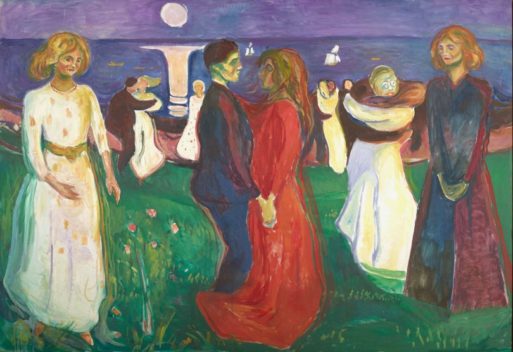
“The Dance of Life” by Edvard Munch
Credit: Munch Museum, Oslo
Edvard Munch (December 12, 1863 – January 23, 1944) was one of the most influential European artists of the late 19th and early 20th centuries. Born in Norway, he began his career as part of the Kristiania Bohème and was mentored by Norweigan artist Christian Krohg. Later, he traveled to Paris, where he was influenced by the works of the post-Impressionists Henri de Toulouse-Lautrec and Paul Gauguin. During the ensuing years, due in part to the tutelage of his friend and mentor, Danish poet Emanuel Goldstein, Munch gradually developed the artistic philosophy that would permeate his later work.
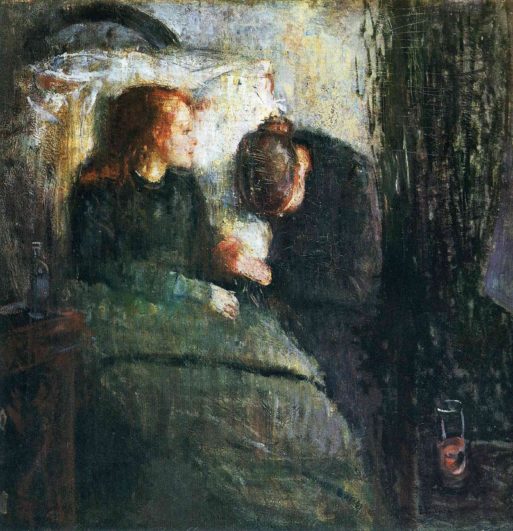
“The Sick Child” depicts the death of Munch’s sister at the age of 15
Credit: edvardmunch.org
Edvard Munch was a prolific painter and printmaker whose pieces were heavily influenced by the many tragedies in his life. Munch’s mother died of tuberculosis when he was a young boy, and his eldest sister suffered the same fate when Munch was just 14. He later captured this deeply traumatic loss in his 1855 masterpiece, “The Sick Child,” a painting he would recreate in various forms at least six times over the next 40 years.
The Frieze of Life
But by far the most influential works in Munch’s oeuvre are the series of paintings now known collectively as the “Frieze of Life.” First exhibited as a group of six paintings in 1893, the collection grew to a total of 22 works by the time it was first shown under the “Frieze of Life” title in 1892. Embued with symbolism, the evocative collection explores the universal human experiences of love, heartache, loss, and despair.
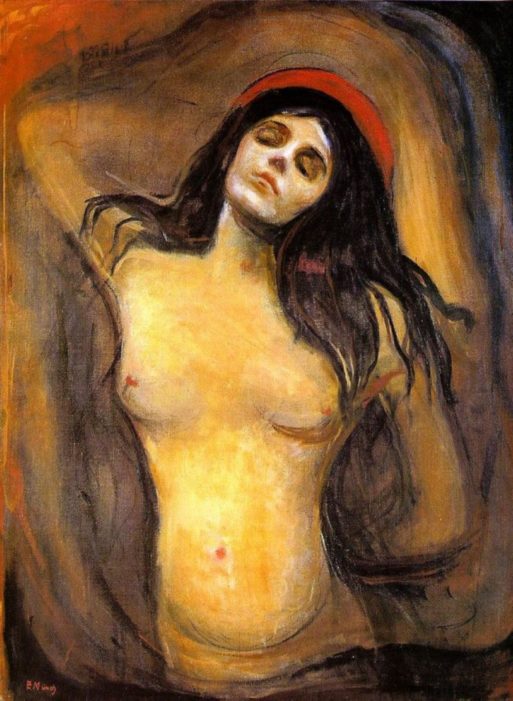
“The Madonna” (1894)
The series begins with the first stirrings of love in “The Voice,” which pictures a young girl dressed in white standing in a garden on a summer night, apparently listening to a voice from within. Munch then takes the viewer down the winding path of blossoming love, passion, torment and despair with “The Kiss,” “The Madonna,” and “Ashes,” the latter of which shows the dark figure of a man crumpled in shame next to a beautiful young woman dressed in white, her bodice undone to reveal red undergarments underneath. According to Munch biographer Sue Prideaux, this painting depicts Munch’s emotional turmoil over his waning affair with Millie Thaulow, a relationship that both thrilled him and filled him with enormous guilt. The last paintings in this part of the series, “Melancholy” and “Jealousy,” show the toll that the end of the relationship took on Munch.
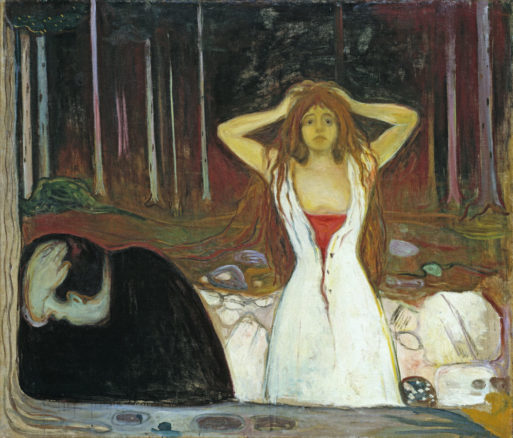
“Ashes” by Edvard Munch (1894)
Credit: National Museum, Oslo
Themes of Anxiety, Despair and Death
In addition to themes of love and loss, Edvard Munch’s “Frieze of Life” portrays the existential angst that pervaded much of late 19th-century society. The most famous painting in the series, “The Scream,” is almost hallucinatory — depicting a man gripped by terror as he walks down the street, juxtaposed against a background of blackened fields and an orange sky. The piece, which Munch said was based on a personal experience, has become a cultural icon — a masterpiece that perfectly sums up the uncertainty, loneliness and existential dread of the modern age.
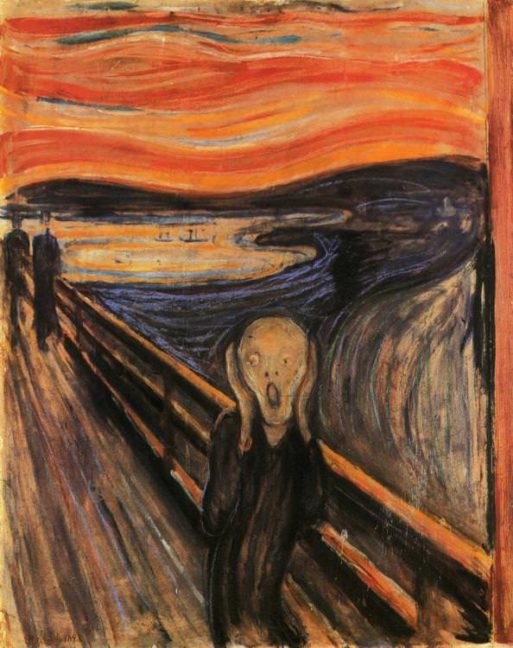
“The Scream” by Edvard Munch (1893)
Credit: Edvardmunch.org
The last in the series of 22 paintings that compose the “Frieze of Life” are those that confront the reality of death. These include “Deathbed Fever,” which depicts Munch’s own battle with tuberculosis, and “Dead Mother and Child,” a heartbreaking painting of a frightened young child holding her ears to shut out the reality that her mother has died. With these last paintings, Munch completed his exploration of what he believed to be the most meaningful phases of life.
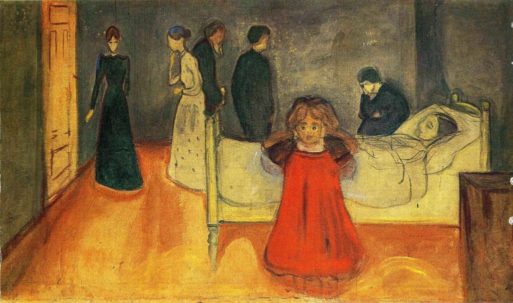
“Dead Mother and Child” by Edvard Munch (1893)
Credit: Munch Museum, Oslo
Interestingly, more than a decade after completing the “Frieze of Life,” Munch had a nervous breakdown. After recovering from the episode a year later, he returned to Norway in 1909, where his work became much more upbeat and less intense.
Edvard Munch bequeathed his entire collection of paintings, etchings, woodcarvings and other works to the city of Oslo, which opened the Munch Museum in 1963. Many of Munch’s paintings are on display there or at the National Gallery in Oslo.

 “The Frieze of Life” by Edvard Munch
“The Frieze of Life” by Edvard Munch


 Our Annual Seven Holiday Gifts for Someone Who Is Grieving, 2024 Edition
Our Annual Seven Holiday Gifts for Someone Who Is Grieving, 2024 Edition
 “Making Mobiles” by Karolina Merska
“Making Mobiles” by Karolina Merska
 “Hands Up to the Sky” by Michael Franti & Spearhead
“Hands Up to the Sky” by Michael Franti & Spearhead














